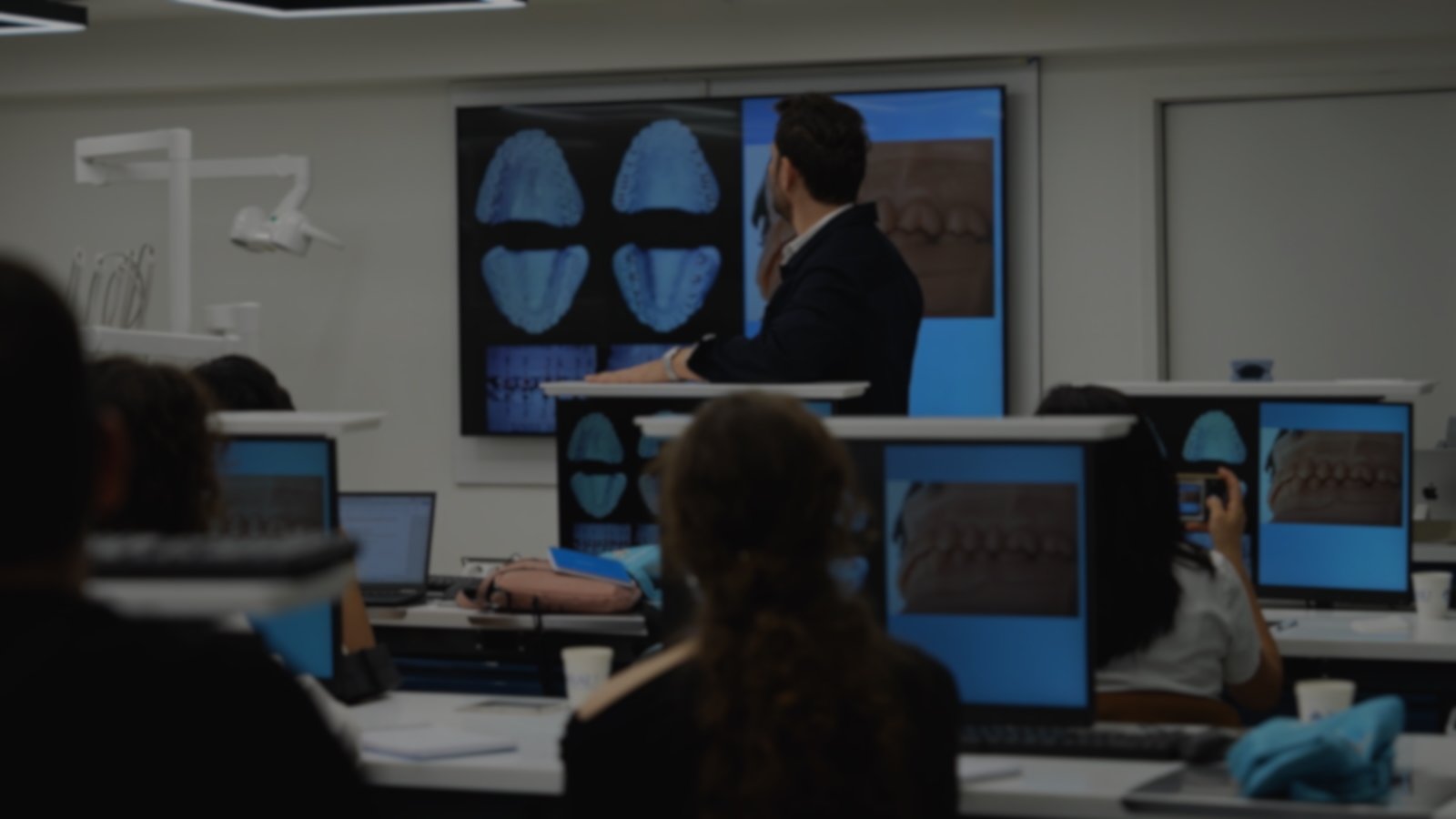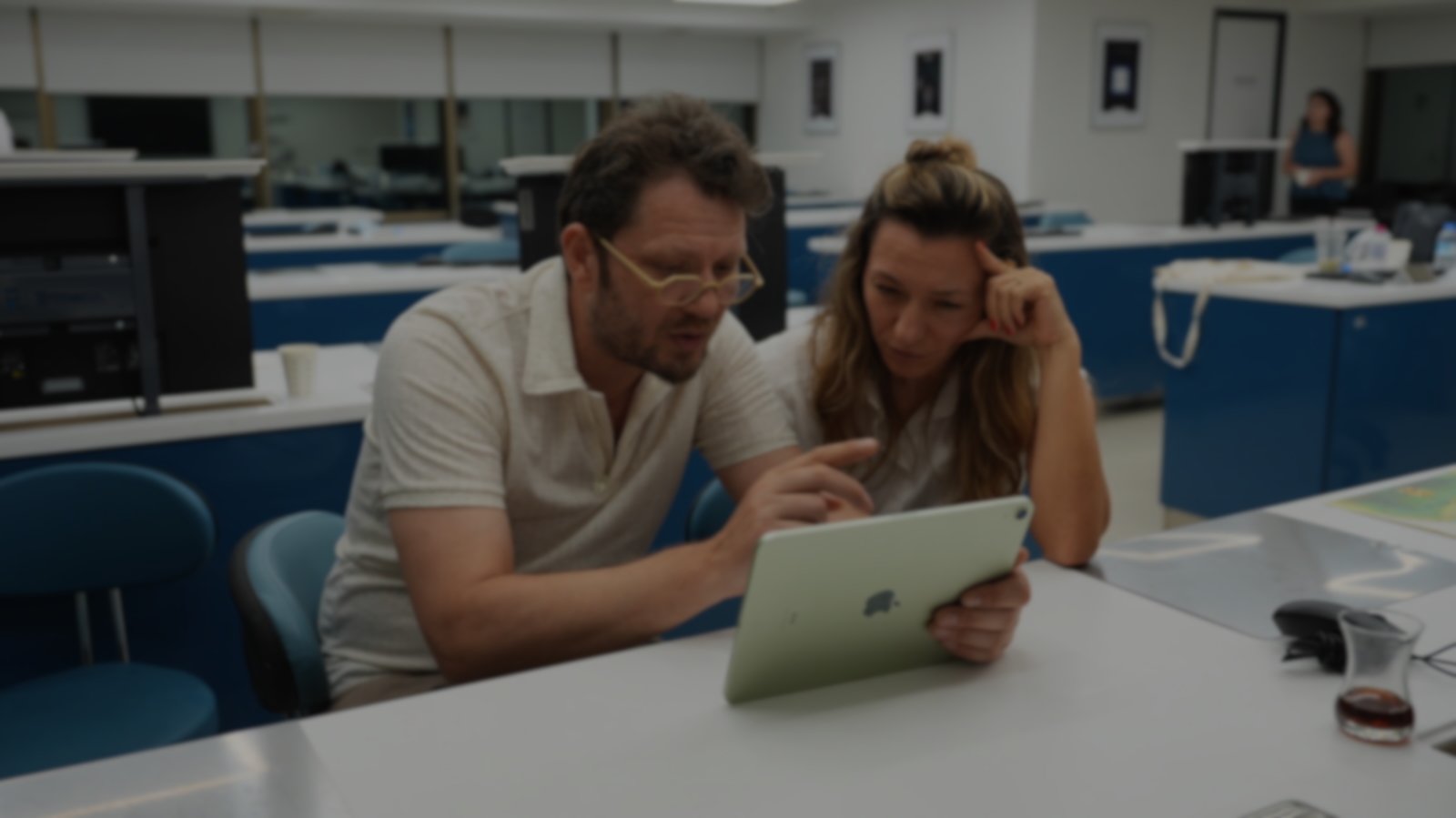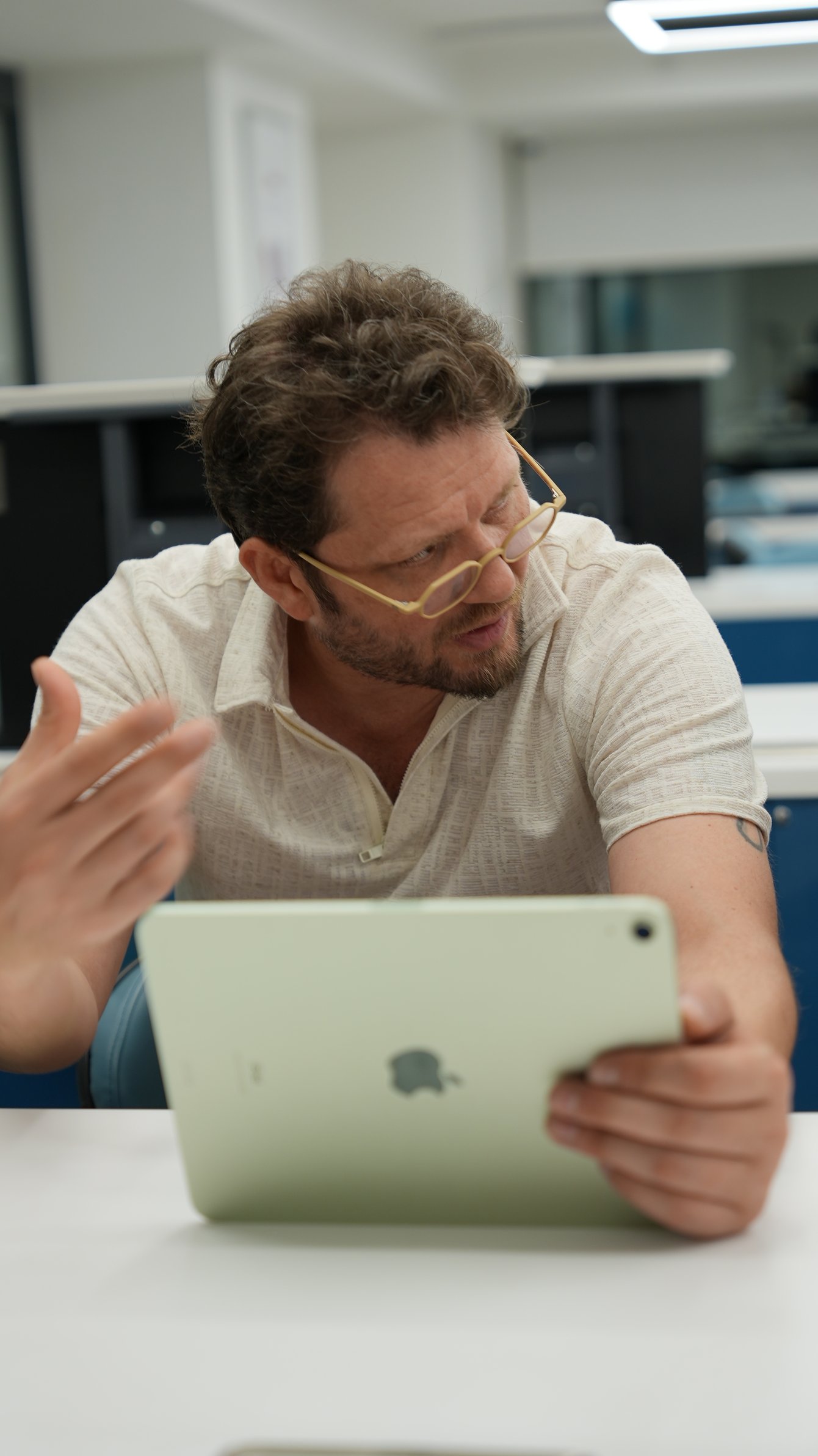“I’ve realized there isn’t a fixed formula for every patient; treatment varies and can fluctuate on a case-by-case basis. From now on, I’ll perform restorations much more efficiently by taking joint position into account.”
- Days
- Hours
- Minutes
- Seconds
DENTIPEDIA ACADEMY
Join the Biofunctional Approach
Disorders of the masticatory system and the TMJ (TMD) affect roughly one-third of the world’s population (→ 29–34%), yet the number of clinicians who can manage these problems through a biofunctional lens remains very limited. Function-focused occlusion training in university curricula is minimal, and dentists who actively practice the “biofunctional” approach are few and far between.
High patient demand → Thousands seeking lasting solutions for TMD, bruxism, and head–neck pain.
Low clinician supply → Few competent clinicians in this field, many patients with TMJ disorders.
The Biofunctional Dentistry Course is designed precisely to close this gap and make you the reference point for function-centered treatment in your region; your patients receive the care they need, and you attain the clinical value you deserve.

What is a Biofunctional Dentist?
.png?width=1080&height=1080&name=Ads%C4%B1z%20tasar%C4%B1m%20(18).png)
Core Principles of Biofunctional Dentistry
-
Function > Aesthetics: When a healthy, balanced chewing system is established, an aesthetic appearance emerges naturally; aesthetics is a by-product of function.
-
Holistic Body Philosophy: Muscles, teeth, the TMJ, and the skeletal system are planned to work in harmony; the goal is to create a biological “ecosystem” that resists breakdown.
-
Interdisciplinary & Digital Approach: Collaboration spans many specialties—from physiotherapy to orthodontics—and leverages advanced imaging and AI-assisted analyses.
-
Ethical Responsibility: Unnecessary procedures are refused, prioritizing a durable system over “instant results.” Good medicine sometimes requires the courage to “not do.”
Istanbul - Ankara - Balıkesir - Çanakkale - Zagreb - Bangkok
Biofunctional Dentistry Course
- Session 1
- Session 2
- Session 3
- Session 4

Session 1 – Biofunctional Dentistry: Foundations
Teaches, step by step, the historical development of function-focused dentistry, the biological model, TMJ anatomy, and detailed muscle–joint–tooth examination protocols; equips participants with the ability to “read the system.”

Session 2 – Applying Biofunction in Practice (Phase 1)
Through splint design & occlusal adjustment/equilibration, cranio-cervical integration, physiotherapy, and patient appointment management, the initial stabilization of function is achieved; participants may bring and discuss one of their own cases.
Achieving Biofunctional Outcomes with a Focus on Biological and Orthopedic Joint Movements (Phase 2)
With adhesive material science, negative–positive coronoplasty, a full functional mock-up, and interdisciplinary planning of final restorations, the definitive restorative completion of the stabilized system is taught.

Session 4 - Masterclass
This workshop—open only to four to six participants who have completed the first three sessions—includes in-depth analysis of participant cases and advanced treatment strategies; theory turns into practice, and practice into mastery.
.png?width=574&height=1020&name=Ads%C4%B1z%20tasar%C4%B1m%20(15).png)
Who Should Join, and Why?
-
General Dentist: Broaden your diagnostic perspective. Learn to view the patient not just through the lens of a filling, but in an integrated way—considering posture, the TMJ, muscles, and systemic findings. Plan every case—from everyday fillings to full-mouth rehabilitations—with a function-centered approach to prevent complications early.
-
Prosthodontist: Crown your restorations with long-lasting function. The course offers a detailed roadmap for designing biologically compatible morphology within the joint–muscle–tooth balance, working with both digital and analog methods, and mastering advanced material science. Grasp the broad biofunctional mindset and reasoning that lead to creative, accurate outcomes. The goal is to keep the function behind the aesthetics stably maintained.
-
Dental Technician: Put “form follows function” into practice. Learn to produce wax-ups, mock-ups, and CAD/CAM designs that reference ideal muscle–joint pathways and occlusal contacts—speaking the same language as the clinic. Clarify your role within an interdisciplinary workflow: apply function-based parameters for modeling, temporaries, splints, and final prosthetic designs.
-
Physiotherapist: Bring the tooth–TMJ–posture chain into your practice. The course demonstrates step-by-step how cranio-cervical relationships interact with occlusion, how to retrain masticatory muscles, and how to integrate physiotherapy with splint therapy. This enables you to develop shared protocols with other relevant disciplines when evaluating neck/back pain originating from temporomandibular issues.
-
Shared Benefit, Interdisciplinary Language
The Biofunctional Dentistry Course accelerates treatment processes and reduces complication rates by enabling the entire team—from general dentists to technicians, physiotherapists to prosthodontists—to speak the same biofunctional language. It instills in every team member a function-focused, ethical, long-term perspective within their area of expertise—resulting in more satisfying clinical outcomes and healthier patients.

Dt. Zelal Sevat
“The course was prepared in a very detailed, highly precise, and comprehensive way, both theoretically and practically. I realized that focusing on details like gait, facial shape, and posture increases success in treatment.”

Prof. Dr. Meral Arslan
“I can now look at the patient holistically—not just the teeth, but also gait, posture, head position, and even the cervical vertebrae. Practicing directly on patients allowed us to experience what we learned in a way that will truly illuminate our clinical work."

Dt. Safa Özer
“It was a very productive course for me; it broadened my horizons. I used to think occlusion was only about the teeth, but I’ve realized it has many parameters.”

Dt. Edanur Güler
“My perspective on the profession has completely changed; I’ve started delivering treatment that serves not just the tooth, but the whole body.”

Dt. Tuba Atamözlü
“The course was incredible—captivating; every time you listen, you gain a different perspective. I learned topics that aren’t taught at university but are truly very important.”

Dt. Lara Su Canbek
“A new page has opened in my life. I can now approach cases I previously thought I shouldn’t touch. This course showed me that there’s a whole different world beyond aesthetic restorations.”

Dt. Sümeyye Solak
“This training was a fundamental awakening for me; I’ll apply the knowledge in my upcoming initial examinations. I grasped the true meaning of interdisciplinary work and saw how I can eliminate gaps in the treatment process.”

Dt. İbrahim Hamut
“This course was a turning point for me; many things that hadn’t clicked for years finally became clear.”

Dt. Sinem Iğdır
BIOFUNCTIONAL DENTISTRY
Course Schedule & Session Flow
- İstanbul
- Ankara
-
KOZYATAĞI HILTON October 11-12, 2025
Session 1 – Biofunctional Dentistry: Foundations
Teaches, step by step, the historical development of function-focused dentistry, the biological model, TMJ anatomy, and detailed muscle–joint–tooth examination protocols; equips participants with the ability to “read the system.”
-
KOZAYATAĞI HILTON December 13-14, 2025
Session 2 – Applying Biofunction in Practice (Phase 1)
Through splint design & occlusal adjustment/equilibration, cranio-cervical integration, physiotherapy, and patient appointment management, the initial stabilization of function is achieved; participants may bring and discuss their own cases.
-
KOZYATAĞI HILTON February 21-22, 2026
Achieving Biofunctional Outcomes with a Focus on Biological and Orthopedic Joint Movements (Phase 2)
With adhesive material science, negative–positive coronoplasty, a full functional mock-up, and interdisciplinary planning of final restorations, the definitive restorative completion of the stabilized system is taught.
-
ŞENGÜL CLINIC April 25-26, 2025
Session 4 - Masterclass
This workshop—open only to six participants who have completed the first three sessions—includes in-depth analysis of participant cases and advanced treatment strategies; theory turns into practice, and practice into mastery.
-
MEKA DENTAL BEYSUKENT October 18-19, 2025
Session 1 – Biofunctional Dentistry: Foundations
Teaches, step by step, the historical development of function-focused dentistry, the biological model, TMJ anatomy, and detailed muscle–joint–tooth examination protocols; equips participants with the ability to “read the system.”
-
MEKA DENTAL BEYSUKENT December 20-21, 2025
Session 2 – Applying Biofunction in Practice (Phase 1)
Through splint design & occlusal adjustment/equilibration, cranio-cervical integration, physiotherapy, and patient appointment management, the initial stabilization of function is achieved; participants may bring and discuss their own cases.
-
MEKA DENTAL BEYSUKENT March 7-8, 2026
Session 3 - Achieving Biofunctional Outcomes with a Focus on Biological and Orthopedic Joint Movements (Phase 2)
With adhesive material science, negative–positive coronoplasty, a full functional mock-up, and interdisciplinary planning of final restorations, the definitive restorative completion of the stabilized system is taught.
-
MEKA DENTAL BEYSUKENT May 23-24, 2026
Session 4 - Masterclass
This workshop—open only to six participants who have completed the first three sessions—includes in-depth analysis of participant cases and advanced treatment strategies; theory turns into practice, and practice into mastery.

DENTIPEDIA ACADEMY
About the Instructor
Dr. Melih Şengül
Biofunctional Dentist, Prosthodontist, Dental Technician
Dr. Melih Şengül is a Prosthodontist and Biofunctional Dentist who unites 25+ years of clinical and laboratory experience in a single practice.
He was born on 22/04/1977 in Germany and studied there through the 5th grade. His father, Himmet Şengül—a Dental Technician—received an honorable mention for Germany’s esteemed “Golden Parallelometer” (Das goldene Parallelometer) award in 1987. In the same year, after being invited to a dental fair in Turkey and drawing the interest of then–Prime Minister Turgut Özal during the visit, the family permanently returned to Turkey in 1988. Şengül completed middle and high school at Ankara Yükseliş College, during which he became interested in advanced laboratory work at his father’s lab. In 1996, he entered Yeditepe University Faculty of Dentistry; already in his first year he joined the Academy of Aesthetic Dentistry and focused his efforts in this field. In 2001, he graduated as one of the faculty’s first alumni and, in the same year, was admitted to Marmara University, Department of Prosthetic Dentistry, where he began his specialty and PhD training.
Today, he brings the biofunctional approach into daily practice at his private clinic in Istanbul. In line with his commitment to clinic–laboratory integration, he also operates a private dental laboratory in Ankara.
His work centers on Biofunctional Dentistry, which considers TMJ, occlusion, masticatory muscles, and posture together as interconnected systems. He teaches this approach through measurable and reproducible protocols that span from diagnosis to splint therapy, from provisional restorations to definitive prosthetic planning.
To date, he has taught and trained dentists in 7 countries, and has mentored many colleagues in case management that stabilizes function, protects biology, and aims for sustainable aesthetics.
Frequently Asked Questions (FAQ)
Will I be able to bring the BDH approach into my clinic/practice?
Yes. Our aim is for you to implement BD in your clinic. It wouldn’t be right to offer a 100% guarantee—it can vary depending on case profile and team conditions. But even after Session 1, you leave with a framework you can “apply tomorrow.”
In general, participants have begun or progressed with patients to be treated using the BDH approach during/after Sessions 1 and 2. After Session 3, they carry out the final interventions and complete the cases. The reason there are roughly two months between each session is so participants can start admitting and treating patients with this approach and receive all the necessary information and mentorship throughout the process.
Will I recoup the course fee in my clinic?
Most dentists see the financial return on this investment through the splint phase and the subsequent finishing phase (occlusal adjustment and, if needed, prosthetic stages)—they usually cover the course fee after 1–2 cases.
In the BD approach, a splint is not a “stand-alone product”; it is a diagnostic-therapeutic phase initiated with the right indication. In this phase, you guide the patient’s joint/muscle closure to a safe position and track symptoms, while also clarifying which interventions are truly necessary at the finishing stage. When you frame it this way for the patient, the splint is understood not merely as a protective device, but as the first step of a planned treatment journey; acceptance and payment behavior follow accordingly.
The finishing stage can range from minor occlusal adjustments to prosthetic restorations, and sometimes to comprehensive restorative solutions. Your clinical value comes not only from the splint, but from the process that follows it.
Additionally, within the scope of BD, more accurate diagnosis reduces unnecessary interventions and repeat appointments; lower fracture/retouch rates free up chair time; the first-month adjustment–follow-up protocol increases predictability; sharing a common language with the laboratory—and providing clear guidance and contact goals—reduces the need for production revisions. The result is less daily “firefighting” and more planned treatment. This directly improves cash flow and indirectly boosts patient satisfaction and referrals. Even during periods when you fabricate only a few splints, this workflow elevates your overall case quality and long-term patient continuity, accelerating return on investment.
The program structure also supports this transition: the backbone is the first three sessions, where the examination decision tree, record protocols, the splint production/delivery/first-month adjustment–follow-up flow, and the bridge to finishing are established in detail. The fourth session is optional; it is designed for one-on-one progress with your accumulated cases and for receiving personalized feedback. Post-course mentorship and case evaluation continue; you’ll also have laboratory communication forms and patient explanation templates on hand. If you wish, you can start with Session 1 only and proceed step by step, continuing after you’ve seen your first cases in practice.
In short, assess your return not only by “how many splints did I make?” but together with the planned finishing phases after the splint and the efficiency gains in your daily operations. BD is designed for you to run these two channels in parallel.
Tüm oturumları birden mi almalıyım?
No, you don’t need to take all the sessions at once; you can take them separately.
Also, Session 4 is optional. Its purpose is to go through cases one by one with limited capacity and, if you have accumulated patients, to make treatment steps and decisions together with Dr. Melih Şengül. Completing the first three sessions—which form the backbone of the program—is sufficient to bring the BDH approach into your clinic. You can add Session 4 later if you wish.
Can I attend Session 1 in Istanbul and Session 2 in Ankara?
Yes, the session content is the same at every location and date. You can take Session 1 in Istanbul and Session 2 in Ankara. If the course opens in another city or country, you can attend the sessions there as well.
I didn’t attend Session 1. Can I join Session 2?
It’s possible; however, we recommend attending Session 1 before moving on to Session 2. This is because Session 2 (splint fabrication–adjustment–initial follow-up) directly depends on the accurate diagnosis and record protocols taught in Session 1.
If I start seeing patients with the BDH approach after Session 1 and need help, what should I do?
From the very first session, Dr. Melih Şengül continues to mentor you outside the course, answers your questions, and—if you wish—you may bring your patient or present a case (limited). If, over time, you have many patients and they are approaching the finishing stage, we recommend bringing these cases to Session 4 to discuss them and determine the next steps.
Do you offer discounts? Can I pay by credit card? Is there an installment plan?
If you pay for 3 or 4 sessions at once, a 15% discount is applied. No discount is applied when sessions are purchased individually.
If you come as a group (2 or more people), a partial discount is applied depending on the number of participants.
You can pay by bank transfer, credit card, or cash. For credit card payments, up to 12 installments are available.
I’m a dentist and would like to come with my technician/physiotherapist. Do you offer a discount for them?
Yes, we offer an 80% discount for one technician/physiotherapist you wish to bring with you.
What are the course dates?
Session 1 – Istanbul: 11–12 October 2025
Session 1 – Ankara: 18–19 October 2025
Session 2 – Istanbul: 13–14 December 2025
Session 2 – Ankara: 20–21 December 2025
Session 3 – Istanbul: 21–22 February 2026
Session 3 – Ankara: 7–8 March 2026
Session 4 – Istanbul: 25–26 April 2026
Session 4 – Ankara: 23–24 May 2026
